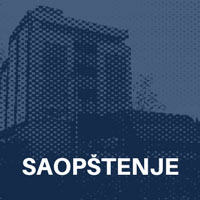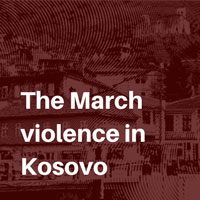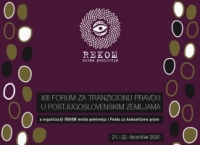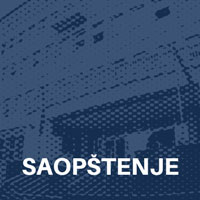(srpski) Porodice ubijenih na Ovčari ostvarile pravo na naknadu štete

Sorry, this entry is only available in srpski.


Sorry, this entry is only available in srpski.

Sorry, this entry is only available in srpski.

 The retreat of the Serbian army and police from Kosovo in June 1999 meant liberation for Kosovo Albanians from Serbian rule and repression, and for Kosovo Serbs it meant the beginning of a new reality marked by the unwillingness and inability of UNMIK and KFOR to protect the personal safety of Serbs, Montenegrins, Bosniaks and Roma people, but also by the prevailing conviction of Kosovo politicians and the public that the priority is independence, followed by solidarity with the Serbs who stayed in Kosovo.[1]
The retreat of the Serbian army and police from Kosovo in June 1999 meant liberation for Kosovo Albanians from Serbian rule and repression, and for Kosovo Serbs it meant the beginning of a new reality marked by the unwillingness and inability of UNMIK and KFOR to protect the personal safety of Serbs, Montenegrins, Bosniaks and Roma people, but also by the prevailing conviction of Kosovo politicians and the public that the priority is independence, followed by solidarity with the Serbs who stayed in Kosovo.[1]
The post-war reality was not easy for Kosovo Albanians either; much of their expectations of liberation came under pressure from the difficult economic situation and faintly observable justice for the thousands of civilians killed and a large number of missing. The then-new government of the Republic of Serbia made a step forward by discovering mass graves in Serbia, but the right-wing political parties, that were part of the government, managed to marginalize the question of the responsibility of the Yugoslav Army and Ministry of Interior for war crimes and influence Kosovo Serbs not to take participation in building a new political system in Kosovo. The killings and disappearances of Serbs and Roma, frequent until the end of 2000, would take place in the presence of KFOR and UNMIK, leading both the remaining Serbs and most of the Albanians to a conclusion that post-war perpetrators had the tacit consent of the international community to create Kosovo without Serbs.[2]

Sorry, this entry is only available in srpski.

Sorry, this entry is only available in srpski.

Sorry, this entry is only available in srpski.

Sorry, this entry is only available in srpski.


On October 15, 2020, the Higher Court in Belgrade sentenced Nebojša Stojanović to eight years in prison for the murder of prisoner of war Ivan Sivrić in Kožuhe in May 1992. The Humanitarian Law Center believes that the sentence was fair and appropriate for the gravity of the crime, as well as that this is one of the few war crimes trials that was completed without delay and in a short time.
On July 13, 2018, the Office of the War Crimes Prosecutor filed an indictment against Nebojša Stojanović, a member of a volunteer unit controlled by the Serbian army, for killing the prisoner of war Ivan Sivrić in early May 1992 in the village of Kožuhe (near Doboj, BiH). In the evening hours, Stojanović took Sivrić out of the Energoinvest factory yard, where the latter was imprisoned, and then took him to a place called Djelovačka Bara, near the River Bosna, where he killed him in a previously dug grave, by shooting him twice in the head with a pistol.
On the basis of the testimony of the injured party and witnesses – inhabitants of Kožuhe and Stojanović’s comrades-in-arms -, the court determined that Ivan Sivrić was a prisoner of war from the Croatian army, that Stojanović was in Kožuhe at the time of the killing, and that he had taken Sivrić to a local café a few days before the killing, where he threatened to kill him. Witnesses identified Stojanović by the fact that he had what they called a characteristic “Cherokee” haircut at the time of the killing.